Over the years, I’ve seen too many buyers make the same mistake — thinking “rough terrain” and “all-terrain” forklifts are just two names for the same thing.
They’re not.
When your forklift gets stuck halfway up a gravel slope or sinks in soft soil, that’s when you realize the wrong choice can cost you far more than the machine itself — it can cost you time, money, and your project schedule.
Rough terrain forklifts1 are built for extreme ground conditions — higher ground clearance2, 4WD drive systems3, and heavy-duty frames4.
All-terrain forklifts5, on the other hand, are designed for flexibility — ideal for farms, yards, and moderately rough sites.
Understanding the difference saves you both money and headaches down the line.
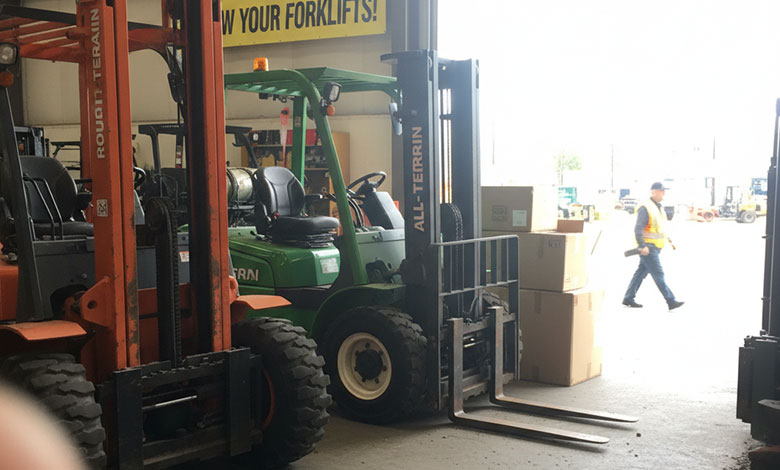
Let me break it down from five perspectives — design, terrain capability, cost, real-world applications, and long-term value — based on what I’ve learned after years of dealing with clients across dozens of industries.
1. Structure and Drive System Differences
Let’s start with what really separates the two. It’s not just the look — it’s how the power moves through the machine.
Rough terrain forklifts1 come standard with 4WD and a reinforced transmission system built for slopes and heavy loads.
All-terrain forklifts5, meanwhile, focus more on agility and efficiency — many are still 2WD.
I always tell buyers: *“Don’t just look at horsepower — look at how torque is distributed.”
A true rough terrain forklift uses a locking differential that keeps all four wheels gripping evenly, even when one wheel loses traction.
All-terrain forklifts5, by contrast, have smoother drivetrains better suited to mixed environments — part yard, part road.
In short: Rough terrain runs on muscle; all-terrain runs on balance.
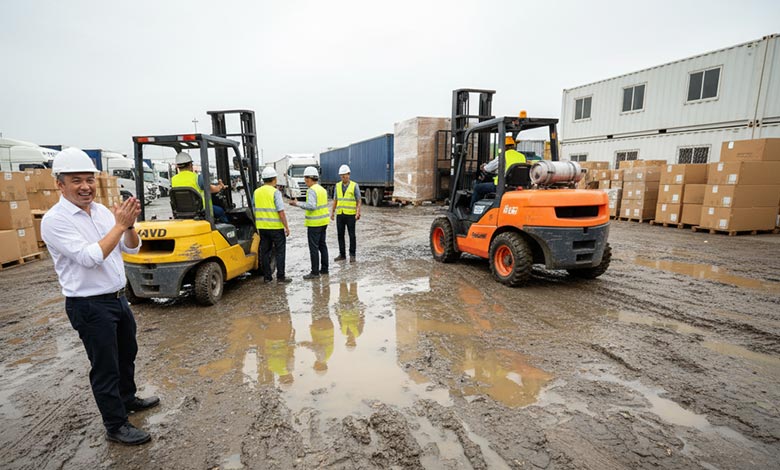
2. Terrain Capability and Stability
If you’ve ever watched a standard forklift trying to crawl through gravel or mud, you know how quickly “productivity” can turn into “stuck in the dirt.”
Rough terrain forklifts1 typically have 250–350 mm ground clearance2 with deep-tread pneumatic tires.
All-terrain forklifts5 average around 150–200 mm and are best for semi-hard or paved surfaces.
Most rough terrain models use oscillating axles6 that keep all four tires grounded — even when the terrain tilts unevenly.
All-terrain models are more like crossover SUVs: they can handle some off-road conditions but aren’t meant for daily combat.
I had one Australian client who ran his all-terrain forklift on a mining site for months — he replaced three sets of tires before switching to a 4WD rough terrain model. Lesson learned.

3. Cost and Lifespan
When people talk price, I always remind them — *the real cost isn’t what you pay upfront, it’s what you pay later in downtime7 and repairs.
Rough terrain forklifts1 cost more initially but need less frequent maintenance and last longer.
All-terrain forklifts5 are budget-friendly for lighter use but wear out faster under heavy stress.
In my experience, a rough terrain forklift easily outlasts an all-terrain unit by 20–30%.
Why? Stronger frame, thicker steel, and slower wear on tires and hydraulics.
It’s not just a machine — it’s peace of mind.
As I often say, *“You’re not buying equipment; you’re buying reliability.”
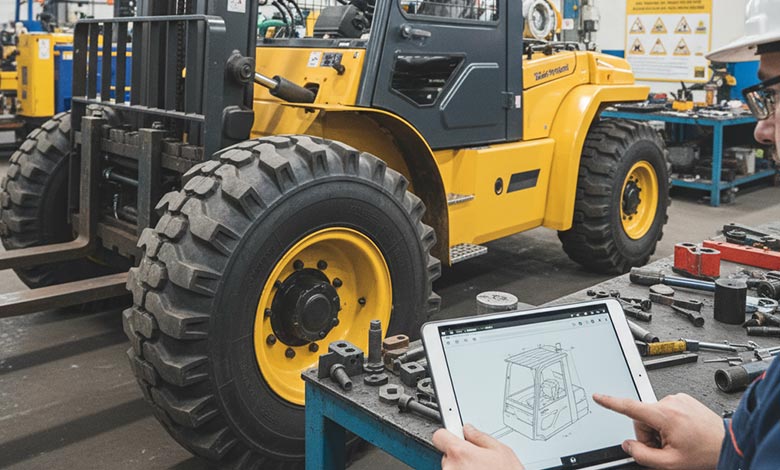
4. Typical Application Scenarios
Each type of forklift has its own “natural habitat.” Choose wrong, and you’ll feel it — fast.
Rough terrain forklifts1 thrive in extreme sites; all-terrain forklifts shine in multi-surface environments.
| Application | Rough Terrain Forklift | All-Terrain Forklift |
|---|---|---|
| Construction sites | ✅ Heavy lifting, slope work | ⚙️ Light material movement |
| Agriculture/Farms | ✅ Soft soil, wet fields | ✅ Farm + road transition |
| Forestry/Mining | ✅ High traction required | ❌ Not recommended |
| Outdoor warehousing | ⚙️ Bulk yard handling | ✅ Flat-surface transport |
| General utility | Ideal for harsh conditions | Ideal for flexible use |
To me, rough terrain forklifts are the workhorses — built to take punishment every day.
All-terrain forklifts5 are all-rounders — versatile and easy to handle.
The question is: which one fits your world better?
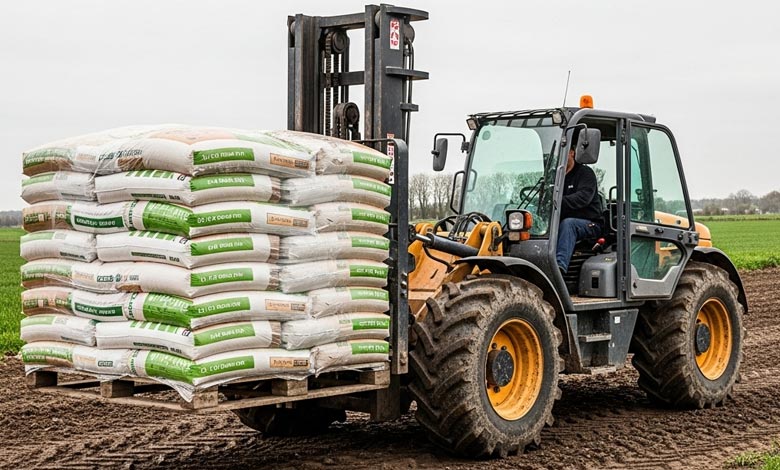
5. From an Investment Perspective: Which Is More Worth It?
When I talk investment with clients, I always say: *Don’t ask which is cheaper — ask which pays you back faster.
A rough terrain forklift is like insurance against downtime7 — fewer repairs, longer uptime.
An all-terrain forklift is a practical option for smaller budgets and gentler work sites.
Downtime kills profit. Every hour a forklift sits broken, wages, rent, and contracts keep running.
That’s why at BLANC-ELE, our RT Series 4WD forklifts are engineered for real-world conditions — reinforced chassis8, wider wheelbase, and electronically controlled hydraulics.
They climb 15°–20° slopes and power through gravel and soft ground without stress.
To me, it’s not just selling a forklift — it’s helping clients save time and protect their projects.

6. Conclusion
Rough terrain forklifts1 are all about raw power and stability.
All-terrain forklifts5 are about flexibility and balance.
If your site is rough, wet, or uneven, go for the rough terrain — you’ll never regret it.
If you mostly work in farms, yards, or light outdoor storage, an all-terrain unit will save you money and still get the job done.
Remember: the right forklift isn’t the most expensive — it’s the one that keeps your work moving, every single day.
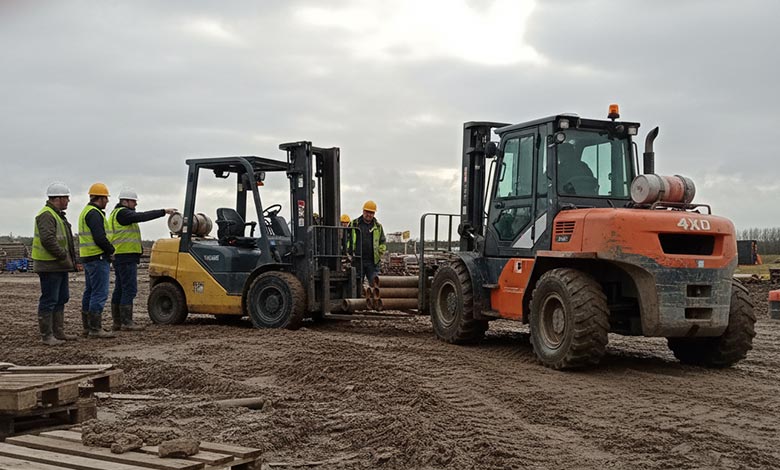
FAQ Section
Q1: Can an all-terrain forklift handle mud or slopes? Yes, but only moderately. It can manage light mud or gentle inclines, but heavy or uneven terrain will wear it down quickly. Use rough terrain models for daily off-road work.
Q2: Is a 4WD forklift really worth the extra cost? If you’re in outdoor operations — absolutely. 4WD means fewer breakdowns, longer lifespan, and more stability under load.
Q3: How do I know which one I need?
Ask yourself three questions:
- What’s the ground condition where you work?
- How heavy are your loads?
- How many hours a day will it run?
Answer those, and the right choice becomes obvious.
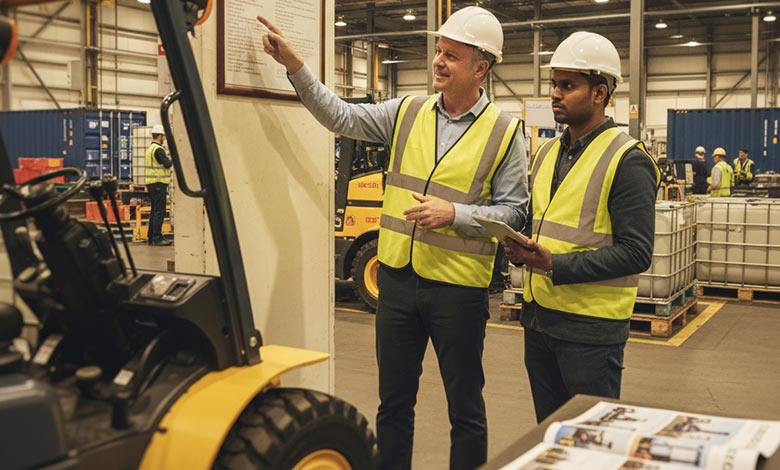
Summary
Rough terrain forklifts guarantee uptime and reliability.
All-terrain forklifts balance cost and versatility.
Choose based on your ground, your workload, and your priorities — not just the price tag.
Explore the advantages of rough terrain forklifts for extreme conditions and how they can enhance productivity. ↩
Understand the significance of ground clearance in forklift design and its impact on operational efficiency. ↩
Discover how 4WD drive systems improve forklift performance in challenging terrains. ↩
Explore the benefits of heavy-duty frames in ensuring durability and reliability for forklifts. ↩
Learn about the features of all-terrain forklifts and how they can be beneficial for flexible work environments. ↩
Find out how oscillating axles enhance stability and traction in rough terrain forklifts. ↩
Learn about the impact of downtime on productivity and costs in forklift operations. ↩
Understand how a reinforced chassis contributes to the strength and stability of forklifts. ↩
